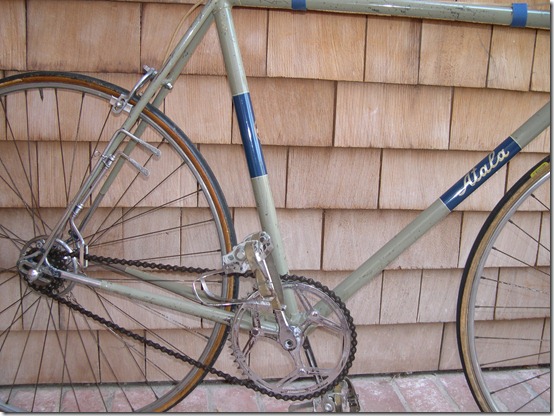Innovazioni Italiane – Part 3 Posted by Serena on Jan 16, 2012 in Culture
This is my third and final blog about innovazioni italiane (Italian innovations) from the last 150 years since Italy’s unification.
Here are another four important innovations that have been ‘Made in Italy’:
1. Vibram – A mountaineering accident, in which six alpinisti (mountaineers) froze to death due to lack of adequate footwear, was the stimulus for the development of a new type of sole. In 1936 the mountaineering expert Vitale Bramani developed climbing boots that would deal with all conditions, both on ice and rock. With the collaboration of Leopoldo Pirelli he perfected a sole made of vulcanised rubber that used a grip which became known as carrarmato (tank). The brand name Vibram was inspired by Vitale Bramani’s name.
2. Cambio per bici (bicycle gears) – These days when we ride a bicycle we take it for granted that, by moving a lever on the handlebars, we can change gears to make it easier to go up a hill. Less than a hundred years ago, however, things weren’t quite so simple: at that time changing gear involved getting off your bike and loosening the nuts on the rear wheel in order to move the chain by hand onto another cog, then tensioning the wheel and tightening the nuts before setting off again. It was the Italian cyclist Tullio Campagnolo who revolutionised the world of cycling with a number of innovative modifications. One of these was the cambio a bacchetta commonly known as the ‘dérailleur’ mechanism, which Campagnolo perfected in 1935. This mechanism enabled the cyclist to change gears by means of two levers without having to dismount the bike . (see photo below)
3. Mater-Bi – In the early 1990s, mindful of the problems caused by the difficult process of recycling plastic, and the consequent impact on the environment, the Italian chemical colossus Novamont developed a new kind of plastic called Mater-Bi. Invented by Catia Bastioli, Mater-Bi differs from the old types of plastic in that it is biodegradable. This new plastic is obtained from materials such as amido di mais, di grano e di patata (maize, wheat, and potato starch), and decomposes naturally into water, carbon dioxide, and methane due to the action of micro-organisms.
4. MPEG – MPEG is currently the most commonly used standard for compressing digital video. The name MPEG is an acronym for Moving Picture Experts Group, the company co-founded and chaired by the Torinese engineer Leonardo Chiariglione. In the 1980s Chiariglione, disillusioned by the failure of the International Radio Consultative Committee (CCIR) to adopt a single world standard for high-definition television (HDTV), followed in the footsteps of the Joint Photographic Experts Group, which had succeeded in setting international standards for the storage of still pictures in an image format which is commonly known by the acronym JPEG. Here is an interesting article about the birth of the MPEG: Chiariglione.org

Build vocabulary, practice pronunciation, and more with Transparent Language Online. Available anytime, anywhere, on any device.





Leave a comment: